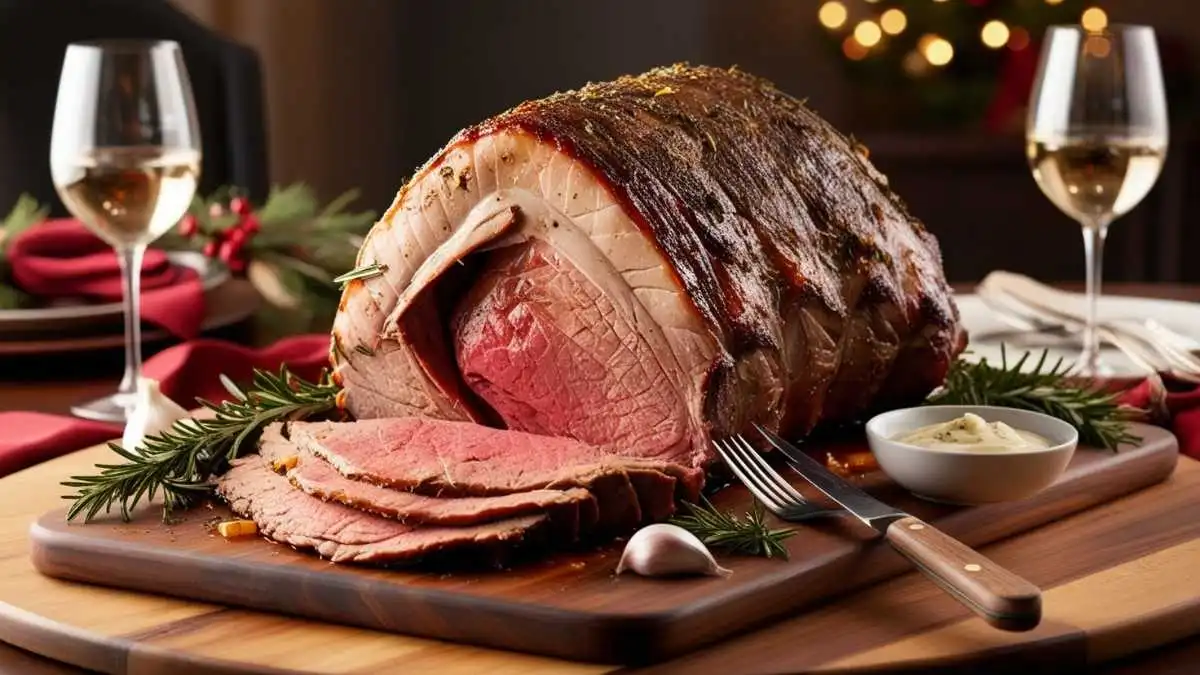Few dishes capture the essence of a celebratory meal quite like a perfectly cooked prime rib roast. Juicy, tender, and bursting with flavor, this show-stopping centerpiece can elevate any occasion if you’ve always wanted to try making prime rib but felt intimidated, fear not.
This guide will walk you through the best easy prime rib roast recipe, step by step, ensuring a delicious outcome every time.
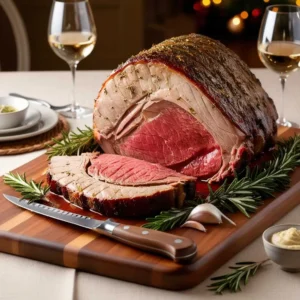
Best Easy Prime Rib Roast Recipe
Ingredients
For the Roast:
- 1 ( 6-8 lb ) bone-in prime rib roast
- 2 tbsp kosher salt
- 2 tbsp black pepper
- 2 tbsp garlic powder
- 1 tbsp olive oil
- 1 tbsp fresh rosemary ( chopped )
For the Au Jus (Optional):
- 1 cup beef stock
- ½ cup red wine
- 2 tbsp unsalted butter
- 1 tbsp Worcestershire sauce
Video
Why Prime Rib is Perfect for Special Occasions
Prime rib isn’t just a meal it’s an experience. Known for its rich marbling and melt-in-your-mouth tenderness, this cut of beef has earned its place as a holiday favorite. Whether it’s Christmas dinner, a New Year’s celebration, or any other special gathering, prime rib provides a sense of indulgence that guests will remember long after the plates are cleared.
What Makes This the Best Easy Prime Rib Roast Recipe?
This recipe simplifies the process without sacrificing quality. Here’s why it stands out:
- Minimal Ingredients: The focus is on the meat’s natural flavors, complemented by a few simple seasonings.
- Beginner-Friendly Steps: No culinary degree is required Straightforward instructions guide you from start to finish.
- Consistent Results: A foolproof method ensures the perfect level of doneness.
Ready to impress? Let’s get started!
Ingredients you’ll need
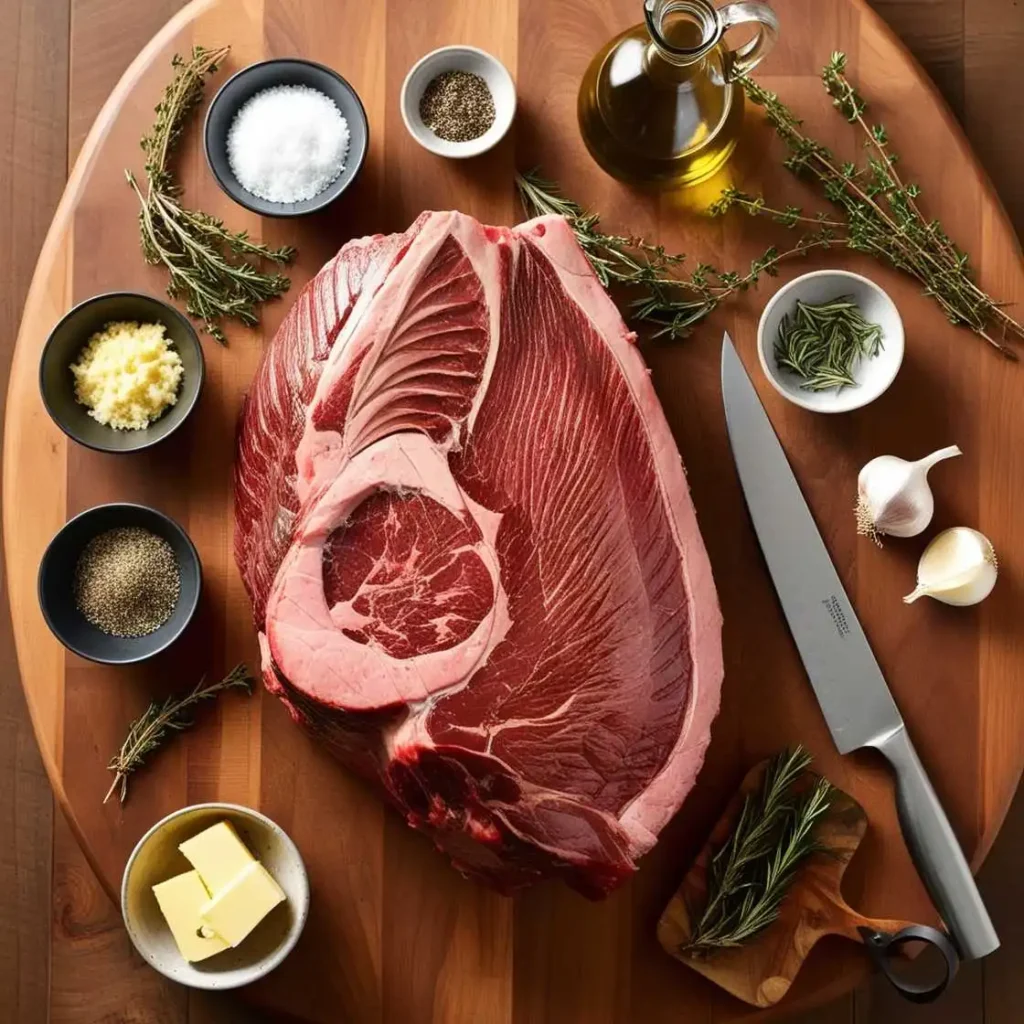
Step-by-Step Instructions for the Boneless Prime Rib Recipe
Step 1. Choose the Right Cut
- The success of your roast starts with choosing a high-quality piece of meat. Look for a prime rib roast with excellent marbling, as the fat contributes to its tenderness and flavor. A bone-in roast is preferred for added moisture and a more impressive presentation.
Step 2. Prepare the Roast
- Start by patting the roast dry with paper towels. This step helps the seasoning adhere better and promotes a crispy crust. Next, combine salt, pepper, garlic powder, and rosemary in a small bowl. Rub this mixture generously over the roast, ensuring it’s evenly coated.
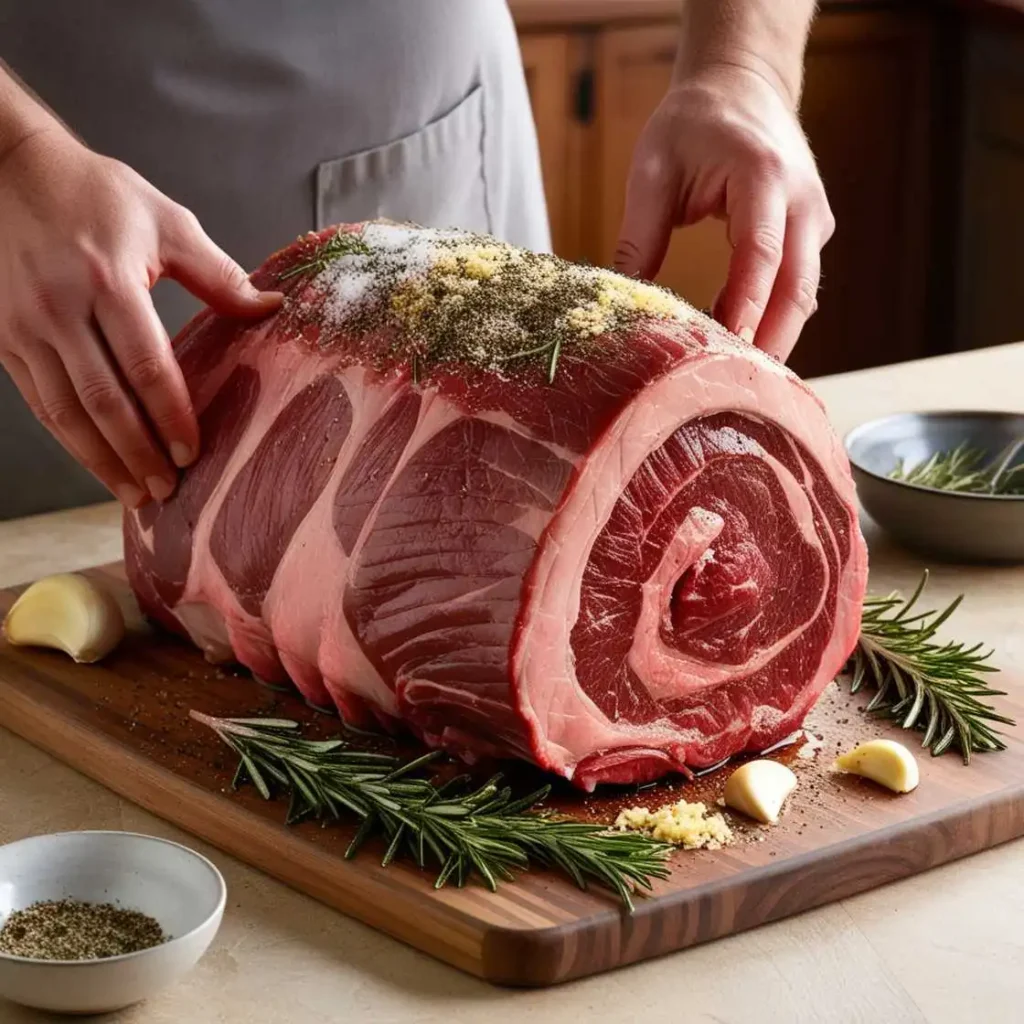
Step 3. Let It Rest
- Allow the seasoned roast to rest at room temperature for about 2 hours. This ensures even cooking and helps the flavors penetrate the meat. While waiting, preheat your oven to 450°F (232°C).
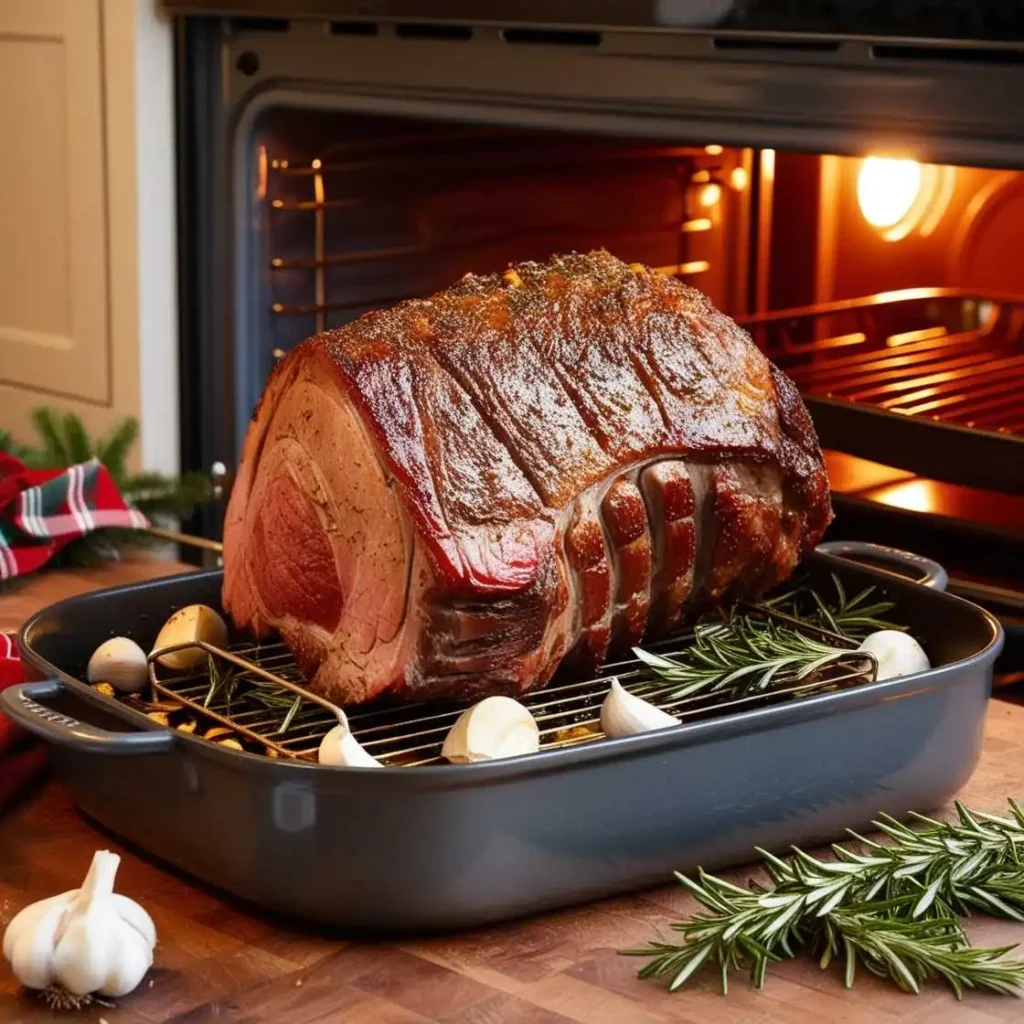
Step 4. Sear the Roast
- Place the roast on a rack in a roasting pan, fat side up. Drizzle with olive oil, then roast at 450°F for 20 minutes. This initial high heat creates a beautiful crust, sealing in the juices.
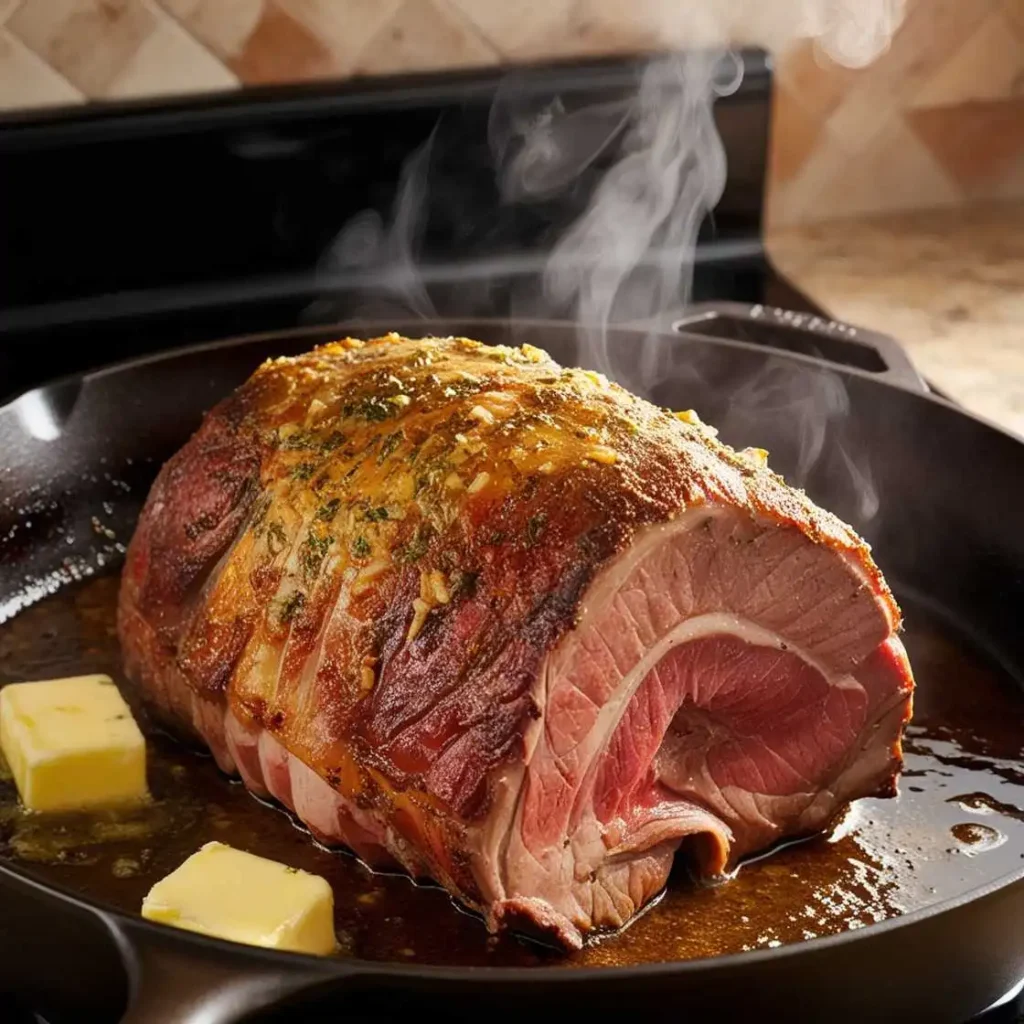
Step 5. Lower the Temperature and Roast
- Reduce the oven temperature to 325°F (163°C) and continue cooking. For medium-rare, aim for an internal temperature of 120°F (49°C) using a meat thermometer inserted into the thickest part of the roast. This will take about 15 minutes per pound but always rely on the thermometer for accuracy.
Step 6. Rest and Serve
- Once the desired temperature is reached, remove the roast from the oven and tent it loosely with aluminum foil. Let it rest for at least 20 minutes. This step is crucial for retaining the juices. Slice the roast against the grain and serve with your favorite sides.
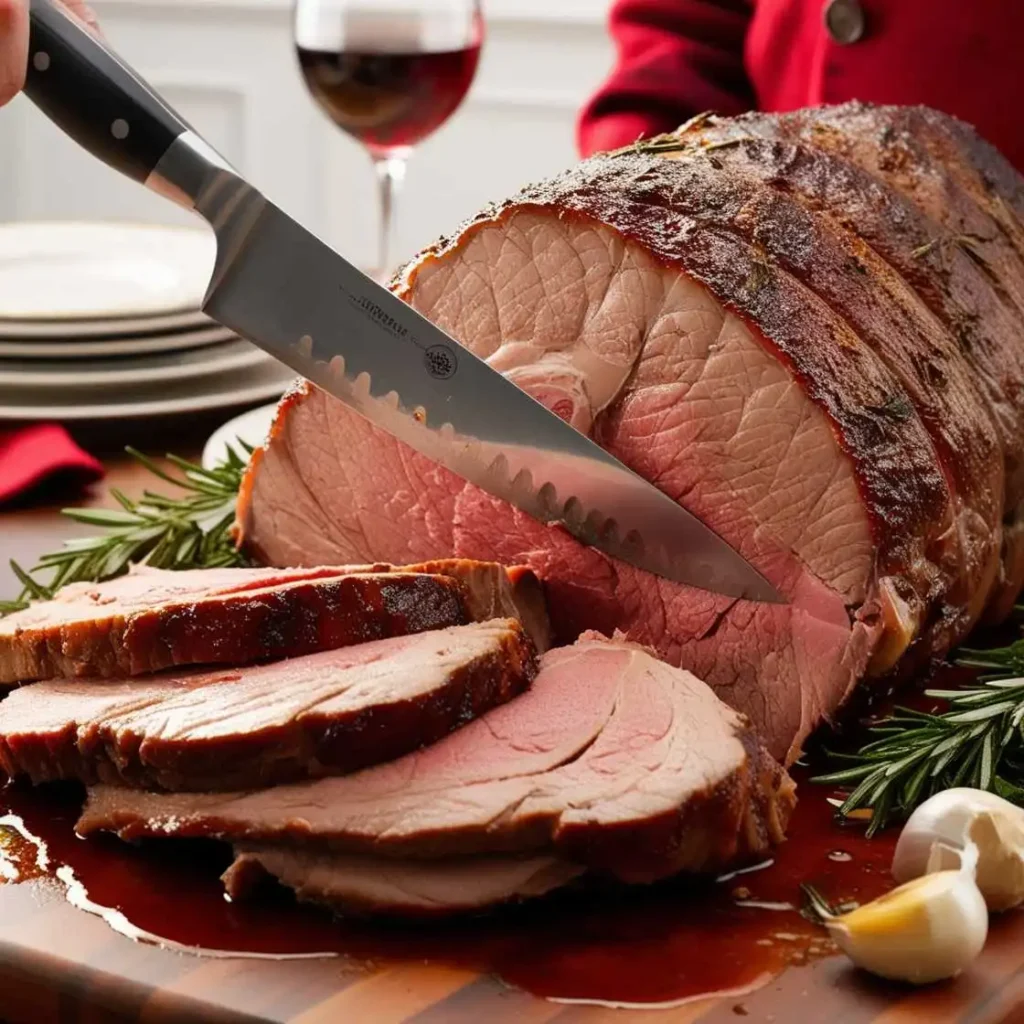
Tips for the Perfect Prime Rib
- Use a Meat Thermometer: This is the most reliable way to achieve your preferred doneness.
- Don’t Skip Resting: Resting allows the juices to redistribute, ensuring every bite is juicy.
- Season Generously: A thick cut like prime rib benefits from bold seasoning.
- Plan Ahead: A large roast takes time to cook and rest, so plan your meal schedule accordingly.
Sides That Pair Perfectly with Boneless Rib Roast
Complete your meal with these classic accompaniments:
- Mashed Potatoes: Creamy and comforting, they’re a natural pairing.
- Yorkshire Pudding: This traditional side is perfect for soaking up juices.
- Roasted Vegetables: Carrots, Brussels sprouts, and parsnips add color and flavor.
- Caesar Salad: A crisp, refreshing salad balances the richness of the roast.
Common Mistakes and How to Avoid Them
- Skipping the Thermometer: Guessing doneness can lead to overcooking.
- Not Resting the Meat: Cutting too soon lets juices escape.
- Using Too Much Heat: Slow and steady cooking ensures tenderness.
- Overcrowding the Pan: Leave space around the roast for even heat circulation.
Serve Your Boneless Prime Rib Recipe
To serve a boneless prime rib roast, follow these steps for the perfect presentation:
- Resting the Meat: After roasting, let the prime rib rest for 15-20 minutes before carving. This redistributes the juices, keeping the meat tender and juicy.
- Carving the Roast: Use a sharp carving knife to slice the boneless prime rib into even portions. Make sure to cut against the grain for the best texture.
- Plating: Serve the slices on a warm platter. To enhance the flavor, drizzle some of the au jus (the natural juices from the roast) over the top.
- Side Dishes: Pair your prime rib with classic sides such as mashed potatoes, roasted vegetables, or a simple green salad. You can also serve it with horseradish sauce or a creamy béarnaise sauce for extra flavor.
- Garnish: For a festive touch, garnish the platter with fresh rosemary or thyme sprigs.
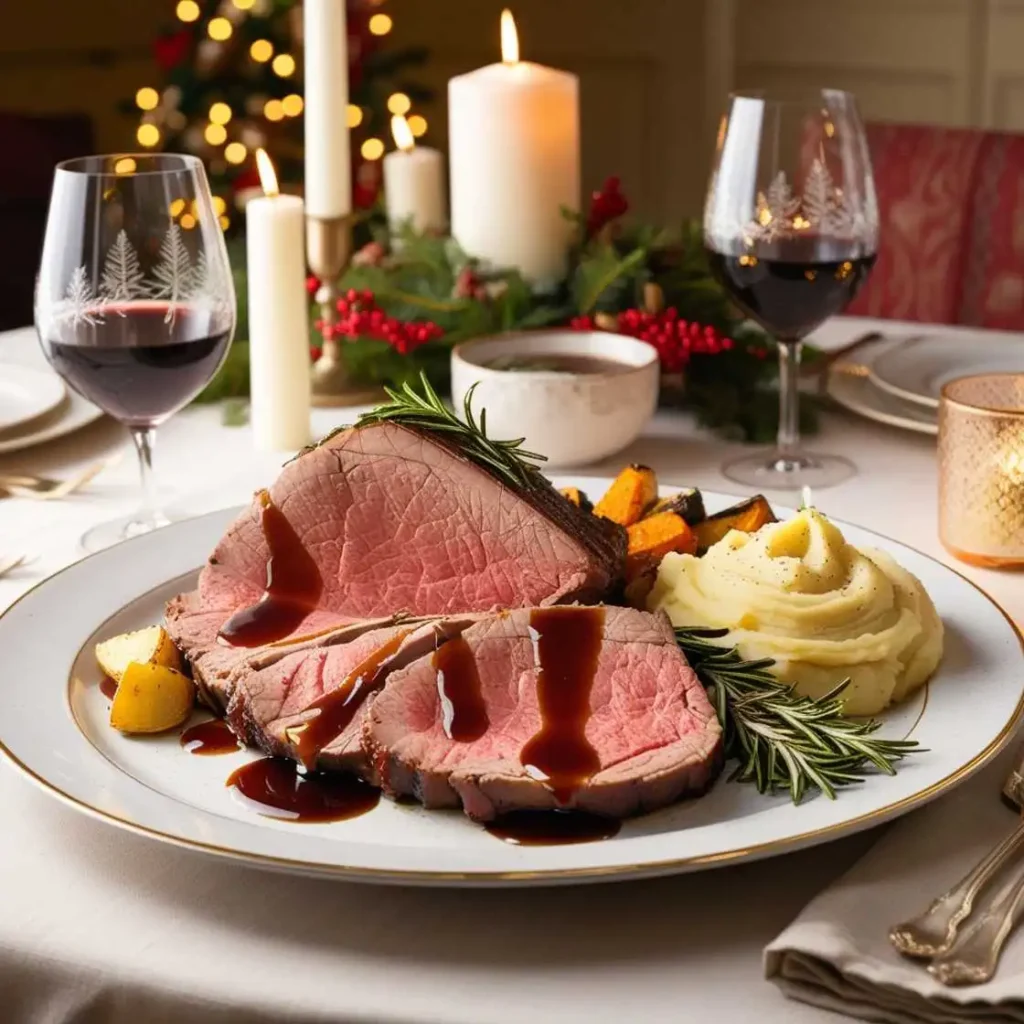
This method ensures the boneless prime rib is both delicious and visually appealing for your meal.
Storage Tips for Boneless Prime Rib
To store boneless prime rib leftovers properly, follow these guidelines:
- Refrigerating: Once the roast has cooled down, wrap it tightly in plastic wrap or aluminum foil to retain moisture. Then, place it in an airtight container or resealable plastic bag. This can be kept in the fridge for up to 3-4 days.
- Freezing: If you want to store the prime rib for a longer period, wrap the slices in plastic wrap and then foil, or place them in a vacuum-sealed bag. Freezing will keep it good for about 2-3 months. When reheating, thaw it in the fridge overnight before warming it up gently in the oven to maintain its flavor and tenderness.
- Reheating: To preserve the juiciness, heat the prime rib in the oven at 250°F (about 120°C) until it reaches your desired temperature. You can also add a splash of beef broth to keep it moist while reheating.
These tips ensure that your prime rib remains fresh and delicious when stored properly.
Conclusion
With this best easy prime rib roast recipe, you’re ready to impress family and friends with a dish that’s both simple and spectacular. By following these steps and tips, even a beginner can achieve a roast that rivals any steakhouse offering.
So, gather your ingredients, preheat your oven, and get ready to create a holiday masterpiece that’ll be the highlight of your table.
Nutrition
Total Fat: 158g | Saturated Fat: 70g | Cholesterol: 360mg | Sodium: 340mg | Total Carbohydrate: 1g | Dietary Fiber: 1g | Total Sugars: 0g | Protein: 75g | Vitamin C: 0mg | Calcium: 50mg | Iron: 8mg | Potassium: 1190mg
FAQ
How do I store leftover prime rib?
Wrap leftovers tightly in aluminum foil or store them in an airtight container. Refrigerate for up to 3 days or freeze for up to 3 months.
Can I make this recipe without a roasting pan?
Yes! Use a sturdy baking dish with a wire rack or place the roast directly on a bed of vegetables.
What if I don’t have fresh rosemary?
Dried rosemary works as a substitute, but uses only half the amount, as dried herbs are more concentrated.
How can I reheat prime rib without drying it out?
Reheat slices in a 250°F oven, wrapped in foil, until warmed through. You can also add a splash of beef stock for moisture.
Can I make this recipe ahead of time?
It’s best served fresh, but you can prepare and season the roast a day in advance. Store it in the fridge, then bring it to room temperature before cooking.

